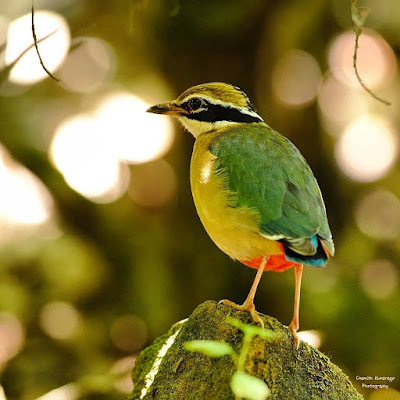Finding the diversity of avifauna at Makini
The Makini philosophy revolves around the conservation and improvement of a balanced ecosystem, which includes all flora and fauna, in and around the camp. We have already commenced several conservation projects aimed at identifying habitats of different avian and mammalian species within the campsite. It is equally important to collect as much data as possible to measure the success of our conservation activities pre and post implementation. This includes observations and indicators documented under varying conditions and seasons. The first such initiative was a bird species and number count, done within a 4-hour period within the camp and surrounding areas.
Bird Count
Counting individual birds we see is a daunting task, but it can give valuable information on population density and causes that would grow or shrink the bird population. These changes may indicate shifts in climate change, habitat loss, pollution levels, migration timing, and more. Accuracy of the figures and taking the count routinely is important for the success of this conservation project.
Techniques for Counting Birds
There are many ways to count birds depending on the birds around, how they behave, and the size of the flock. Following are some techniques we looked at to carry out the counting exercise.
Through Photographs - You take a digital photograph of a bird flock and count individuals on a computer screen or a printed version of the photo. Photographing is one of the most accurate and reliable ways of counting as it gives the precise count, but the downside is that it's time-consuming and takes a lot of effort and resources.e count, but the downside is that it's time-consuming and takes a lot of effort and resources.
Individual Counts - You roam around the selected area during dawn and dusk, when birds are most active and take a visual count on different bird varieties. The individual count is a practical technique and you only need a pair of binoculars and a notebook.
Grids - Grid technique is suitable to count large single species bird flocks where birds are relatively stationary. The field of view is divided into a grid, takes the count of one section, and multiplied by the total number of grid sections.
Timing - The timing technique is used to count fast-moving large bird flocks, where the Grid and Individual counting is impossible. The timing method focuses on a fixed point the flock is passing and counts the number of birds to pass that point in a certain period. Then the entire amount of time it takes for the whole flock to pass is recorded, and the count is multiplied by the number of increments in that overall time to measure its full size.
After careful evaluation of the above methods, we went ahead with Individual counting as it seems the most practical way to get the first bird count within and around the camp. After spending a total of about 4 hours -- 2 hours in the early morning and 2 hours during late afternoon, we were able to record the species listed below.
- Sri Lankan Junglefowl
- Peafowl
- Lesser Whistling Duck
- Painted Stork
- Asian openbill
- Eurasian Spoonbill
- Indian Pond Heron
- Gray Heron
- Cattle Egret
- Little Egret
- Intermediate Egret
- Indian Cormorant
- Shikra
- Brahminy Kite
- White-bellied Sea-eagle
- Grey-headed Fish-eagle
- White-breasted Waterhen
- Indian Thick-knee
- Great Thick-knee
- Black-winged Stilt
- Red-wattled Lapwing
- Whiskered Tern
- Spotted Dove
- Rock Pigeon
- Emerald Dove
- Green Imperial-pigeon
- Sri Lanka Green-pigeon
- Rose-ringed Parakeet
- Alexandrine Parakeet
- Plum-headed Parakeet
- Blue-faced Malkoha
- Pied Cuckoo
- Greater Coucal
- Crested Treeswift
- Green Bee-eater
- Common Kingfisher
- Oriental Scops Owl
- Brown-headed Barbet
- Coppersmith Barbet
- Yellow-crowned Woodpecker
- Lesser Golden-backed Woodpecker
- Jerdon's Nightjar
- Indian Nightjar
- Brown Shrike
- Small Minivet
- Common Iora
- Black-hooded Oriole
- Sri Lanka Woodshrike
- Indian Pitta
- White-browed Bulbul
- Red-vented Bulbul
- Ashy Prinia
- Plain Prinia
- Common Tailorbird
- Dark fronted babbler
- Yellow-billed babbler
- Brown-capped babbler
- White-rumped Shama
- Magpie Robin
- Indian Robin
- Purple-rumped Sunbird
- Purple Sunbird
- Long-billed Sunbird
- Scaly-breasted Munia
- Malabar Pied Hornbill
- Gray Hornbill
- Golden-fronted Leafbird




.jpg)

Comments
Post a Comment